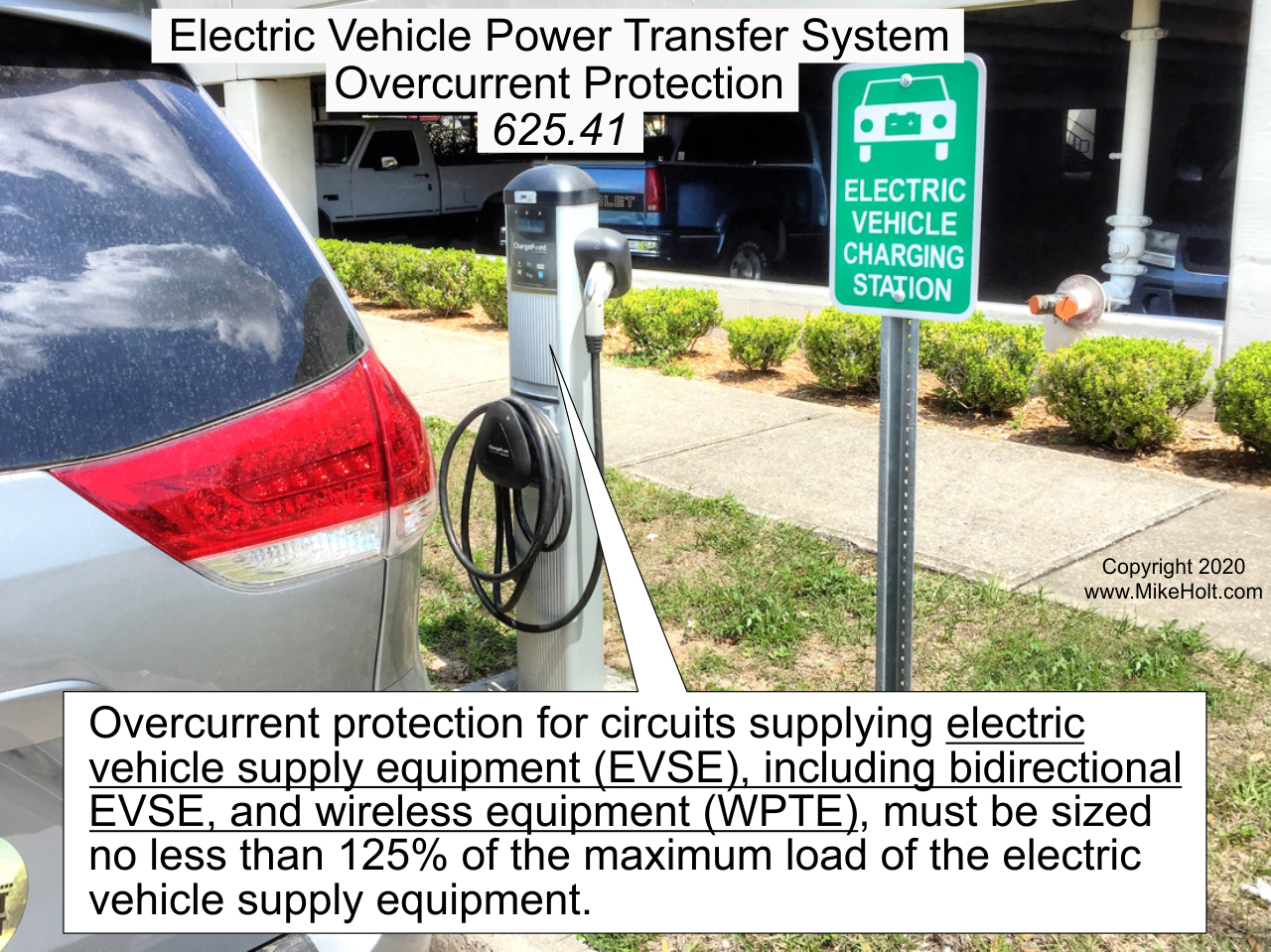|
For EC&M Magazine
By Mike Holt, NEC® Consultant
Here's the follow-up to yesterday's newsletter.
This includes the answers to the questions sent, so you can see how you did.


Figure 01
|
 |
|
Figure 01
|
For EC&M Magazine
By Mike Holt, NEC® Consultant
Here's the follow-up to yesterday's newsletter.
This includes the answers to the questions sent, so you can see how you did.

Note: The answers to these questions are based on the 2020 NEC.
Q1. What is the NEC definition of the term Electric Vehicle Power Export Equipment (EVPE)?
A1. Electric Vehicle Power Export Equipment (EVPE). The equipment, including the outlet on the vehicle, that is used to provide electrical power at voltages greater than 30V ac or 60V dc to loads external to the vehicle as the source of supply [625.2]
Note: Electric vehicle power export equipment and electric vehicle supply equipment are sometimes contained in one piece of equipment, referred to as a bidirectional EVSE.
Q2. What is the Code rule for sizing overcurrent protection for circuits that supply electric vehicle supply equipment (EVSE)?
A2. Overcurrent protection for circuits supplying electric vehicle supply equipment (EVSE), including bidirectional EVSE, (EVPE), and wireless equipment (WPTE), must be sized no less than 125 percent of the maximum load of the electric vehicle supply equipment [625.41].‚Figure 01
Author's Comment:
â–ºSince the charging load for electric vehicle supply equipment is required to be sized no less than 125 percent of the load, then the conductors must be sized to be protected by the circuit overcurrent protective device in accordance with 240.4, 110.14(C)(1), and 310.15.
Q3. What does the NEC require for the service and/or feeder rating of power transfer equipment serving electric vehicle charging loads?
A3. The power transfer equipment must have sufficient rating to supply the load served [625.42]. Electric vehicle charging loads are considered to be continuous loads. Services and feeders must be sized in accordance with the product ratings. Where an automatic load management system is used, the maximum equipment load on a service and feeder is the maximum load permitted by the automatic load management system.
Adjustable settings are allowed only on fixed-in-place equipment only. If adjustments have an impact on the rating label, those changes must be in accordance with manufacturer's instructions, and the adjusted rating must appear with sufficient durability to withstand the environment involved on the rating label.
Electric vehicle supply equipment with restricted access to an ampere adjusting means are permitted to have an ampere rating(s) equal to the adjusted current setting. Sizing the service and feeder to match the adjusting means is allowed.
Restricted access must prevent the user from gaining access to the adjusting means. Examples of restricted access are as follows and must be accomplished by at least one of the following:
(1) A cover or door that requires the use of a tool to open.
(2) Locked doors accessible only to qualified personnel.
(3) Password protected commissioning software accessible only to qualified personnel.
Q4. What are the Code rules regarding electric vehicle supply (EVSE) equipment that incorporates a power export function as part of an interactive system?
A4. Electric vehicle supply equipment (EVSE) that incorporates a power export function and is part of an interactive system that serves as an optional standby system, an electric power production source, or a bidirectional power feed must be listed and marked as suitable for that purpose. When used as an optional standby system, the requirements of Article 702 apply; when used as an electric power production source, the requirements of Article 705 apply [625.48].
Electric vehicle power export equipment (EVPE) that consists of a receptacle outlet only must be in accordance with 625.60.
Q5. What is the NEC requirement for GFCI protection of receptacles for electric vehicle supply equipment?
A5. In addition to the GFCI protection requirements contained in 210.8, all receptacles installed for the connection of electric vehicle supply equipment must be GFCI protected [625.54].
Author's Comment:
â–ºGFCI breakers or receptacles typically used in dwelling units are not suitable for back feeding. That would prohibit their use for bidirectional EVSE. This GFCI requirement only applies to cord and plug connected EVSE, making hard wired EVSE the only type that would be suitable for bidirectional use.
|

